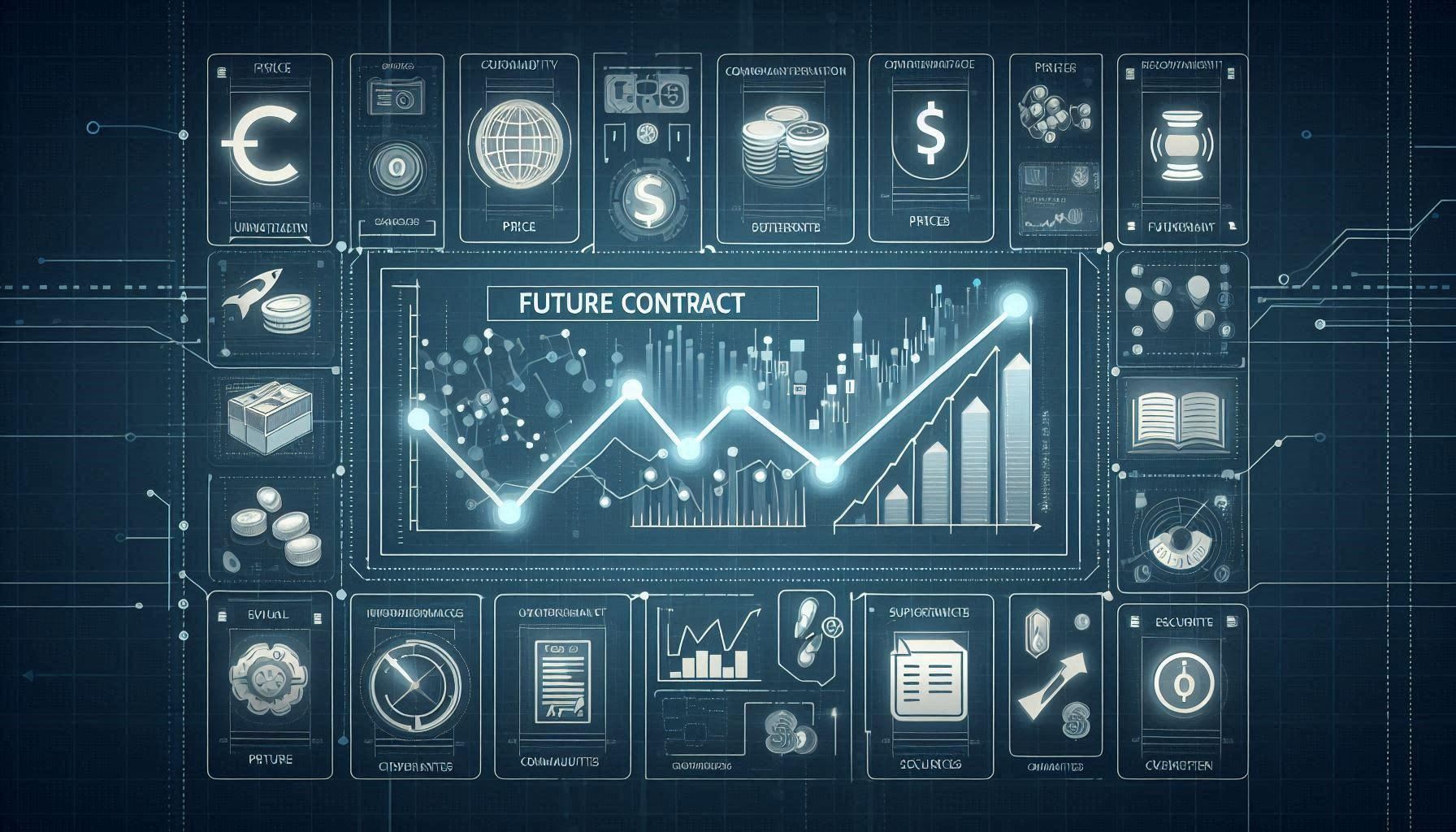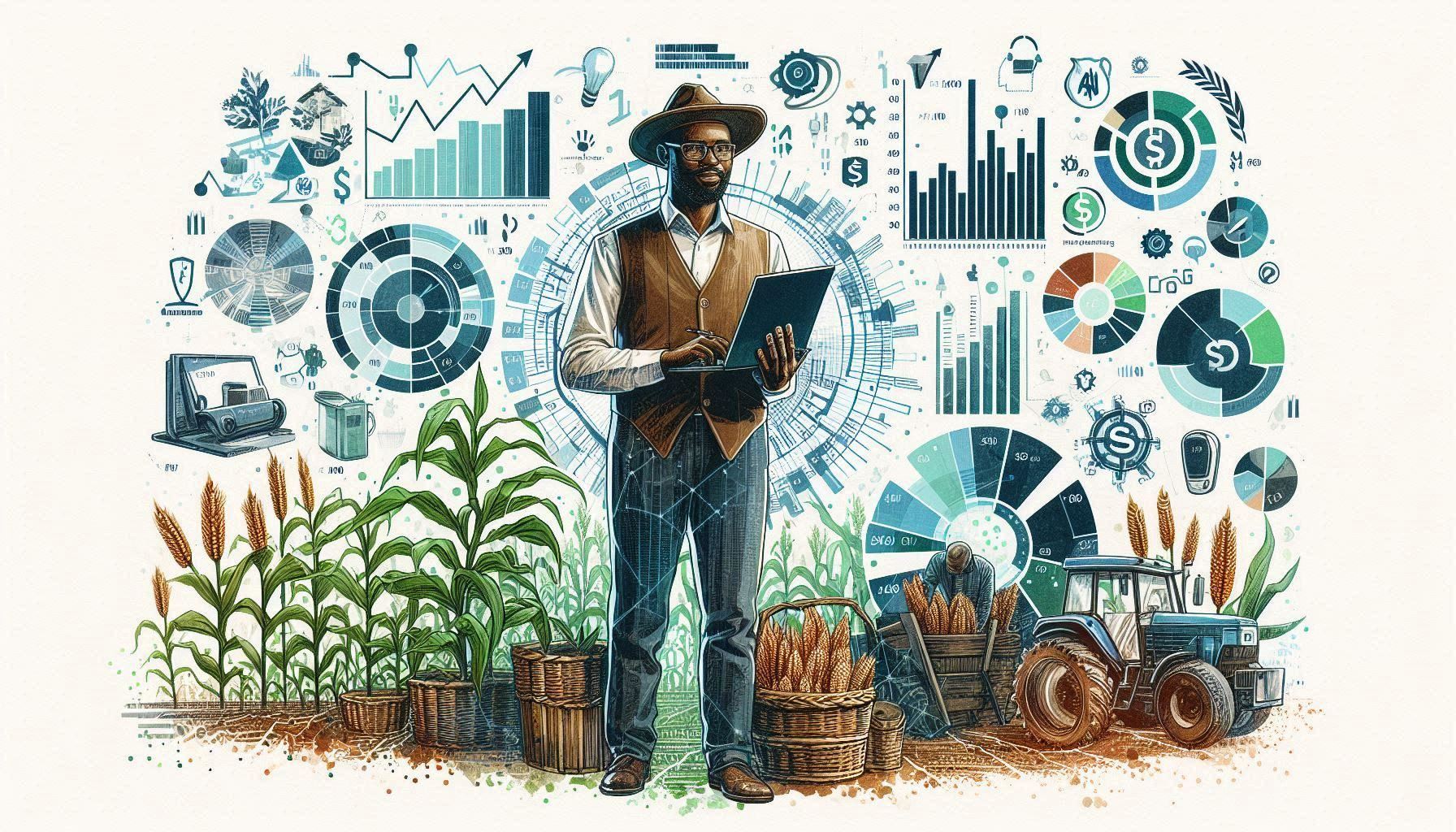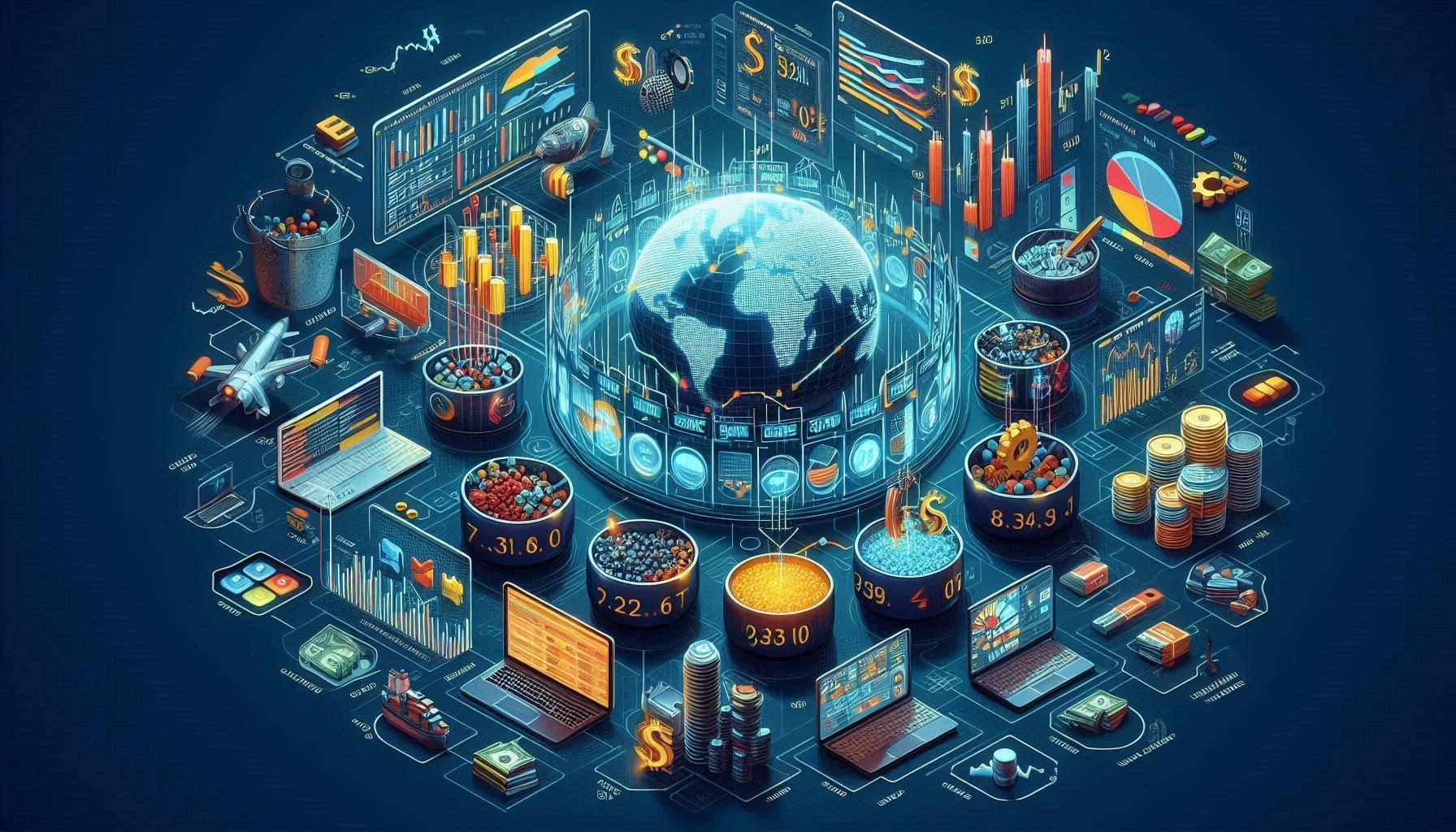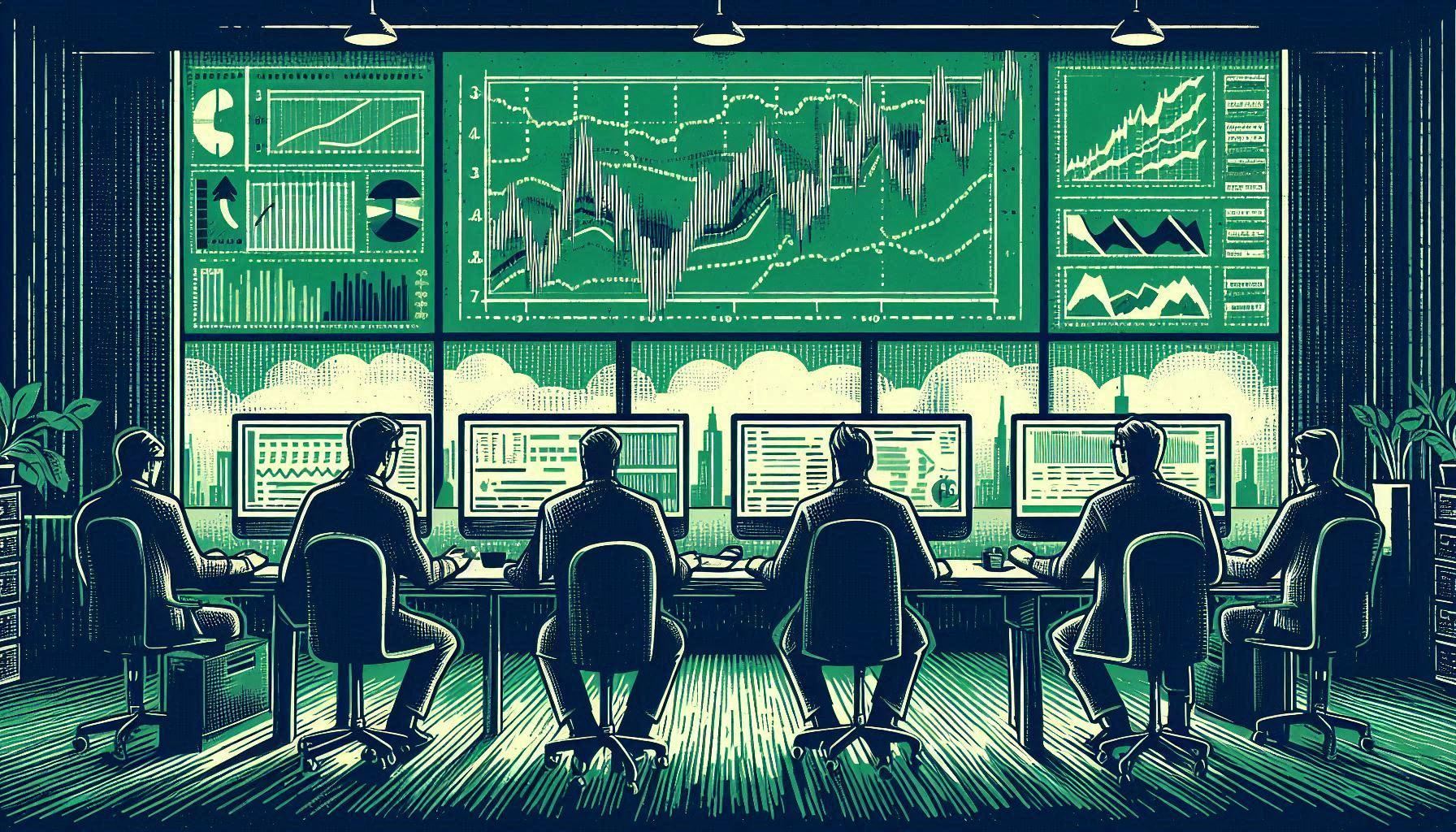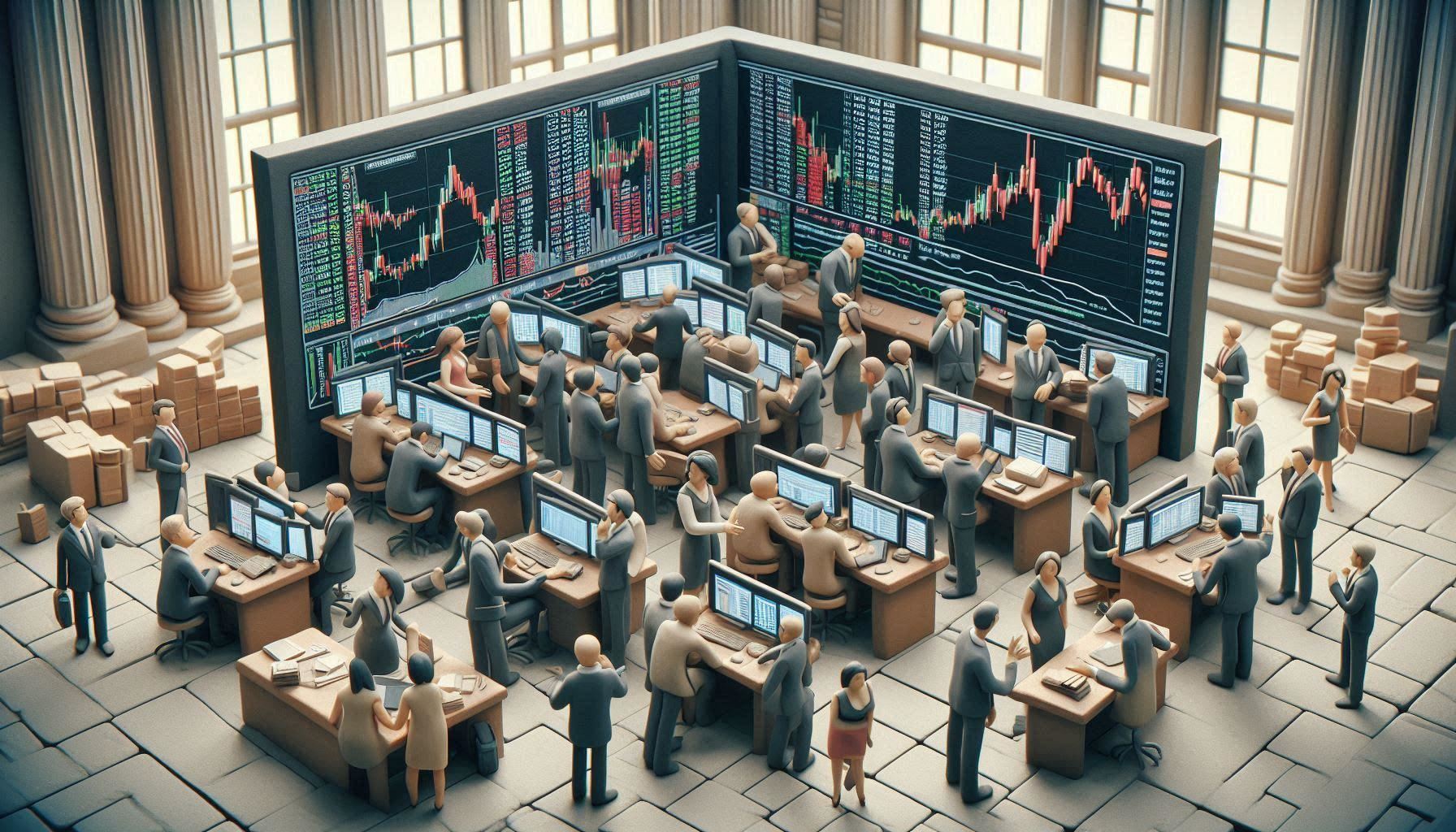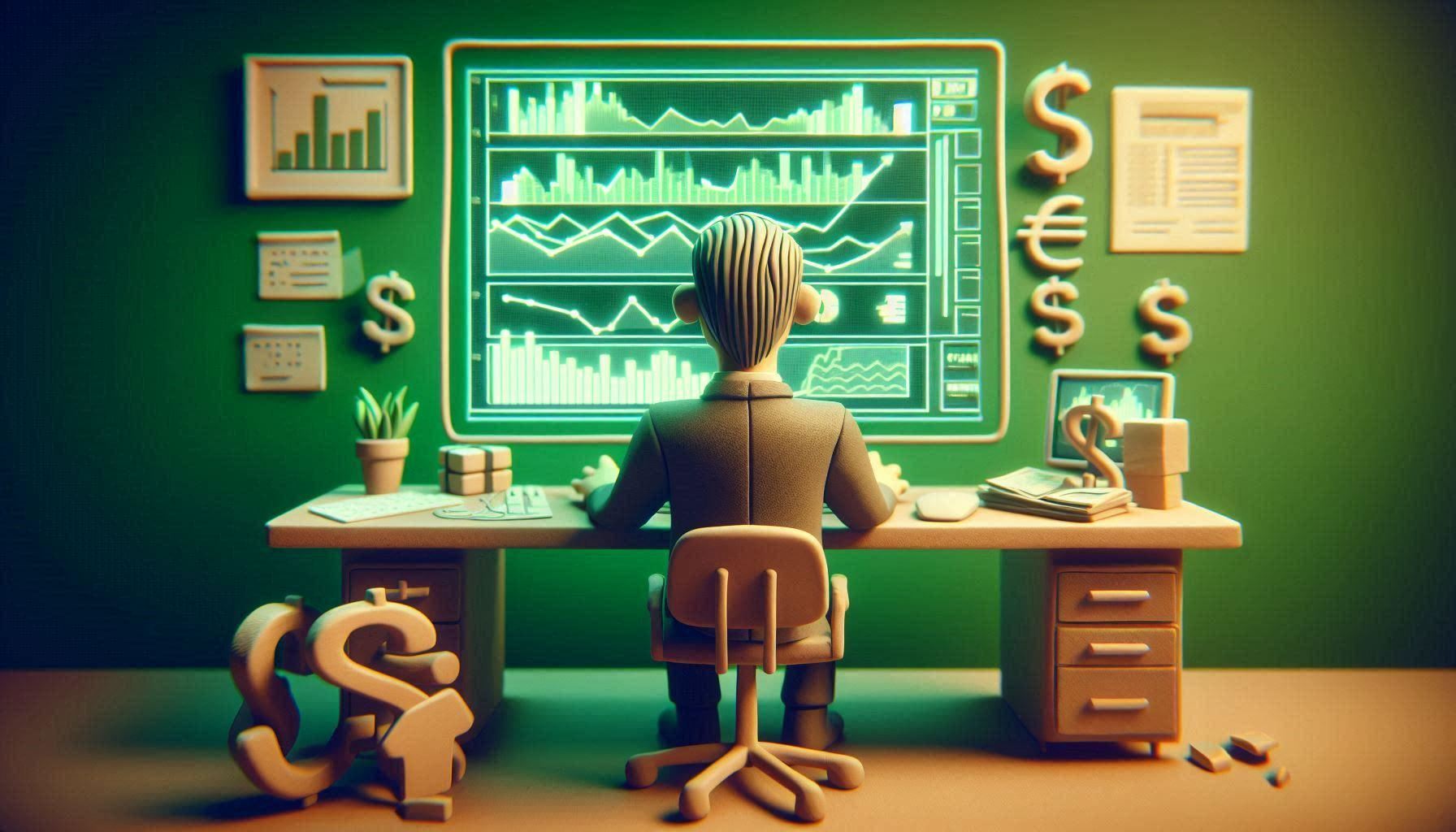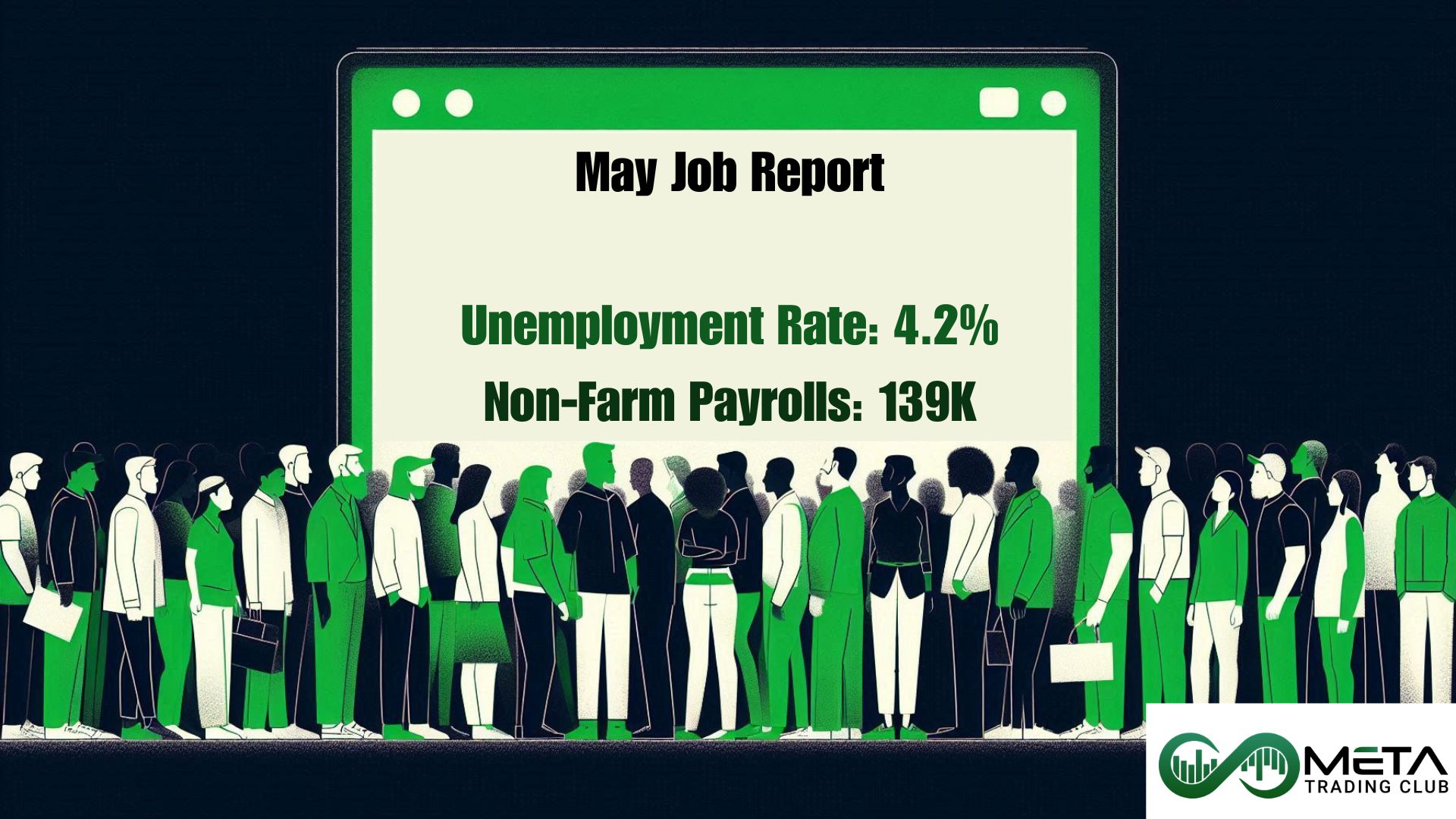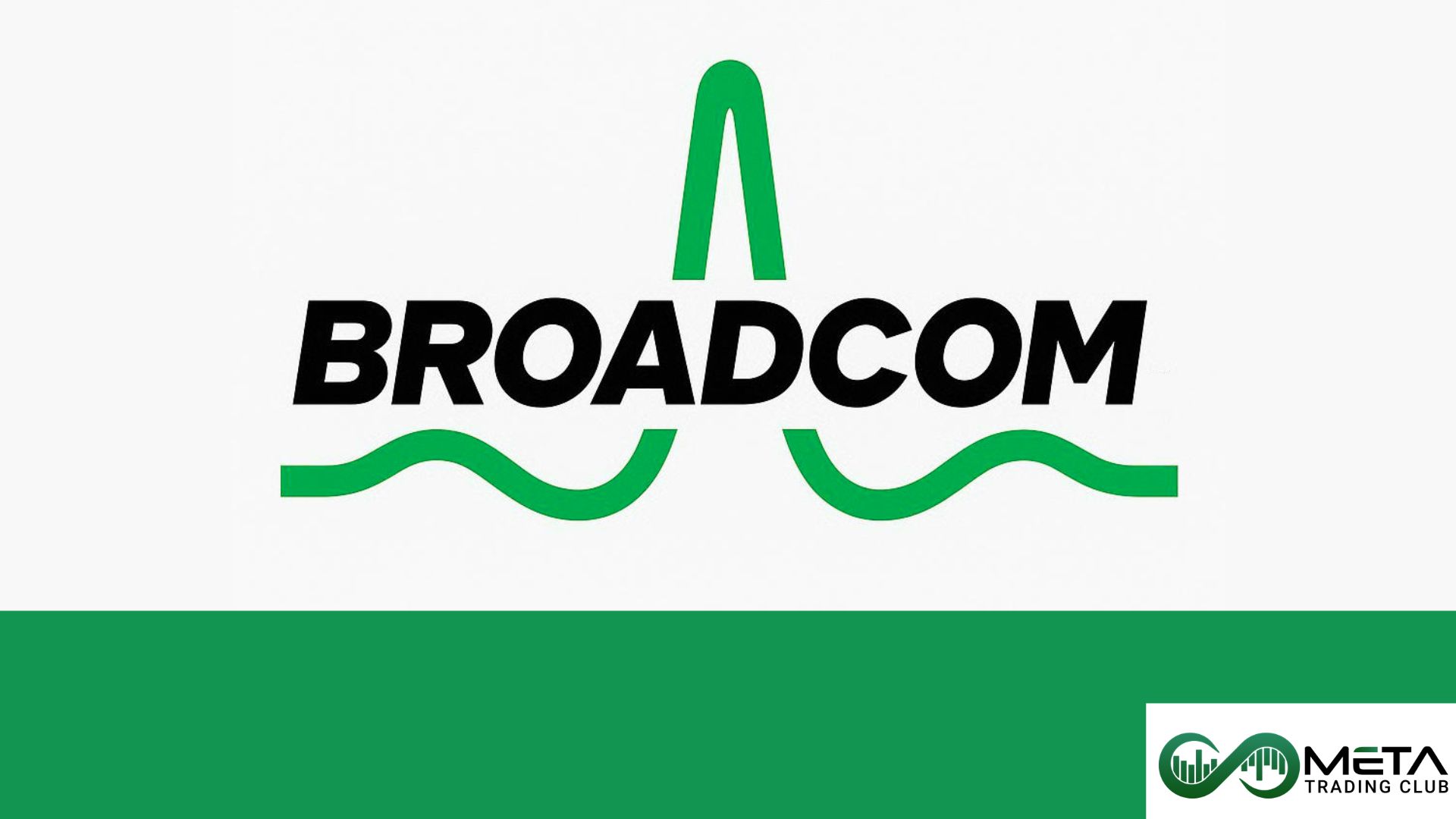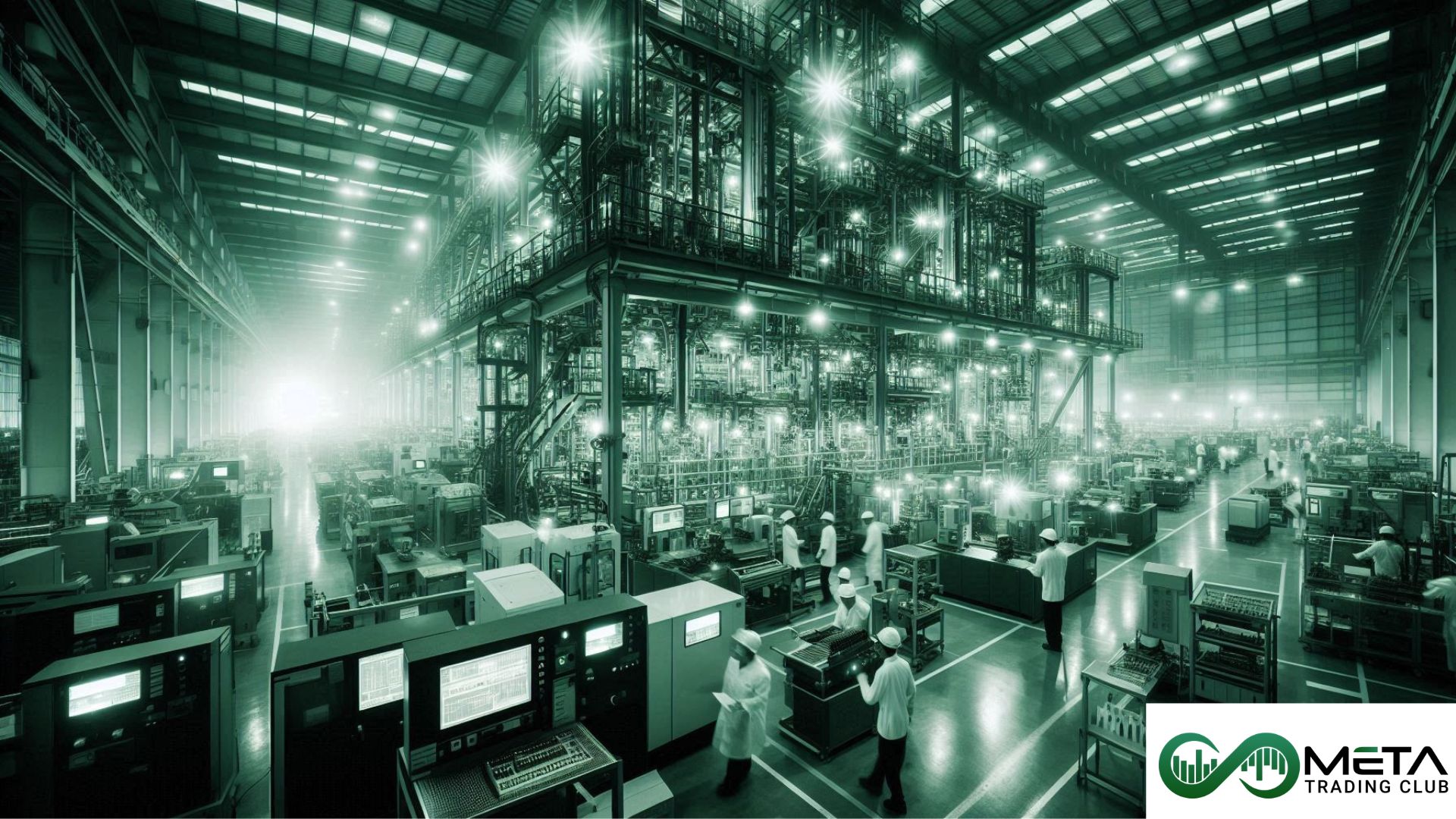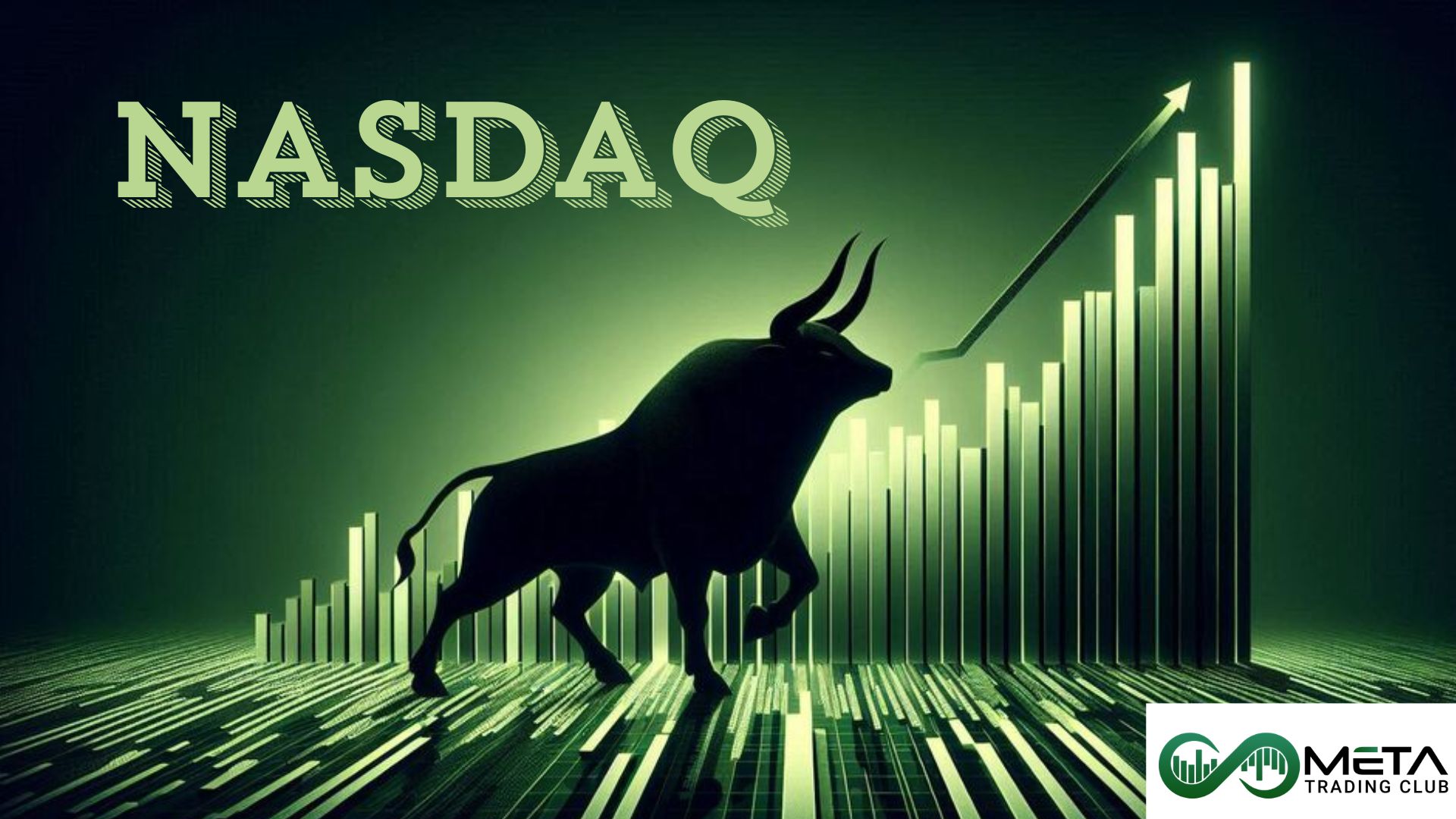Futures contract is a fascinating and potentially lucrative financial endeavor that offers traders the opportunity to profit from the price movements of various assets, including commodities, currencies, and financial instruments. While it can be a powerful tool for experienced traders, it’s essential for beginners to gain a solid understanding of the fundamentals before diving into futures trading. Are you new to futures trading? Maybe you want to learn more about the industry, or you’re simply interested in becoming a better trader. Either way, our guide to futures contracts provides everything you need to know about the futures market. We will explain futures for beginners in detail and cover key concepts.
Table of Contents
What is a Futures Contract?
Imagine a trader who believes that the price of gold will rise in the future. He wants to profit from this anticipated increase.
This trader enters into a gold futures contract by buying it. The contract specifies that they will purchase a specific quantity of gold at a fixed price on a predetermined settlement date (usually the last day of the contract month, which is typically three months out).
Futures contracts are agreements made for an underlying asset, which can be in the form of commodities, stocks, currency, metals, bonds or any other securities. A contract with a fixed price wherein the buyer of the contract has the intention to buy the asset, and the seller of the contract sells the asset. This implies that the buyer is in a long position, and the seller of the contract is in a short position with regards to the underlying asset. And you, you’re in the wrong position, straighten your back, it’s good for you, and also use this as a reminder to drink water. 😀
What’s The History of Futures?
Early versions of futures contracts have been traced back to rice markets in Japan in the early 1700s. But futures trading as we know it today began around 1848 when a group of grain merchants established the Chicago Board of Trade (CBOT).
A few years later, the CBOT established the first recorded “forward” contract (a predecessor of the futures contract) based on 3,000 bushels of corn. The Chicago Mercantile Exchange (CME Group) has since purchased the CBOT and several other exchanges over the past decade.
Why did futures take root in Chicago? The city’s location in the middle of the nation’s breadbasket made it a convenient place for buyers and sellers to meet.
“The evolution of the futures market began with a need to cover the risks to both sides if the growing season didn’t turn out perfectly”, according to MarketsWiki, a derivative market database. Buyers, for example, were vulnerable to delivery of substandard or worse yet, no product at all if the growing season was a bust. They wanted some assurances that the quantity and quality of the commodity they were purchasing would be available when needed. Also, farmers needed to know that a glut of available crops across the industry wasn’t going to put them out of business.
Elements of Futures Contract
Now before taking a position in a futures contract, a trader should be aware of the five main elements of a futures contract. These instruments are much different from buying shares in companies on stock exchanges.
- Underlying Asset: A futures contract is based on an underlying asset, which can be almost anything, including commodities (like oil, gold and wheat), financial instruments (like stock, indices and currencies), and even cryptocurrencies.
- Contract Size: Each futures contract has a standardized size, which specifies the quantity of the underlying asset. For example, a standard crude oil futures contract may represent 1,000 barrels of oil.
- Expiration Date: Futures contracts have a specified expiration date, after which they can no longer be traded. The expiration date varies depending on the contract but is typically on a monthly or quarterly basis.
- Price: The futures contract specifies a fixed price at which the underlying asset will be bought or sold when the contract expires. This price is known as the “futures price” or “strike price.”
- Market Participants: There are two primary types of market participants in futures trading: hedgers and speculators. Hedgers use futures contracts to protect themselves against price fluctuations in the underlying asset, while speculators aim to profit from price movements.
How Do Futures Contracts Work?
To better understand how futures contracts work, let’s walk through a hypothetical example:
Corn Futures Contract: Imagine you are a farmer who grows corn, and you are concerned about the possibility of falling corn prices in the future. To protect yourself from potential losses, you decide to enter into a corn futures contract.
Contract Selection: You choose a corn futures contract with a specific expiration date and contract size. Let’s say it’s a contract for 5,000 bushels of corn expiring in three months.
Entering the Contract: You enter into the contract with a buyer (or “long” position) who believes that corn prices will rise. The agreed-upon futures price is $5 per bushel.
Price Movement: Over the next three months, the price of corn in the spot market fluctuates. If the spot price falls below $5 per bushel, you, as the seller, are protected because you can sell your corn at the higher futures price.
Expiration: When the contract reaches its expiration date, you have two options: you can deliver the 5,000 bushels of corn at the agreed-upon price of $5 per bushel, or you can offset your position by entering into an opposite contract (buying back the 5,000 bushels).
Profit or Loss: Your profit or loss is determined by the difference between the futures price and the spot price at the time of contract expiration.
In this example, futures contracts have served their primary purpose for you as a farmer, which is to hedge against unfavorable price movements. This risk management tool is one of the key reasons futures trading exists.
What are the Main Types of Futures Contracts?
Before entering the world of futures trading, traders must take the time to understand what the different types of futures contracts are and how they differ from each other. Let us now look at the main types of Futures contracts.
1- Commodities Futures
Commodities are tangible assets that traders can buy and sell. The most common commodities in which traders buy futures contracts are oil, metals, natural gas, food grains, etc. The security behind such contracts is the assets themselves.
Commodities futures are very important for managing price risk, especially to people like farmers. The primary producer of crops or the farmer can enter into a futures contract to sell his produce at a particular price at a particular date in the future. This way, he gets an assurance of the price he will get for his efforts. He can be free from the tension of losses because of the price going down in the future.
Similarly, the buyer of food grains from the farmer will also know in advance the price which he has to pay for the food grains. He can accordingly plan his production if the product is a raw material for his further production. Or he may sell the produce at a higher rate and ensure that he makes a profit from the trade. Oil and gold are other important commodities in which futures contracts play a major role globally.
2- Currency Futures
Currency futures are contracts on the exchange price of currencies. The parties to the contract fix an exchange rate for the exchange of two currencies on a specific date in the future. Such contracts help nullify the exchange rate risk that may arise in the case of international trade over a period of time. Usually, the parties close these contracts before the date of expiry as per their need.
For example, suppose a man lives in the USA and has an investment in Germany that is due to mature in November this year. One USD is equal to 1.087 Euro at the current Forex rate. He can buy currency futures and lock the current exchange rate of USD to EUR. Thus, he will be sure of what investment amount he will receive at this currency exchange rate, no matter what the currency exchange rate is at that time.
3- Interest Rate Futures
Interest rate futures are a sort of hedging against the risk that may arise due to fluctuations in the rate of interest of a financial instrument at a future date. Uncertain interest rates may create an extra interest burden on companies and result in heavy losses. We usually use interest rates futures with a money market or bond market instruments such as government bonds, bills, etc. They are the underlying assets for such futures contracts.
Whenever there is a rise in the rate of interest, the prices of the bonds fall. Similarly, bond prices rise with a fall in the rate of interest. A trader can sell interest rates futures contracts when the interest rates rise and the price of his bonds falls. They can then repurchase the bonds at a lower rate from the market. This will help them to offset some of the losses they will suffer from a fall in the price of the bonds.
4- Stock and Stock Market Index Futures
Traders use single stock and stock market index futures as a tool for hedging against risks, speculations or simply for trading. They are also an indicator of the confidence and sentiments of traders in the market. Single stock futures are a hedge against the future price of the stock. While stock market index futures track the movements of an index.
Stock futures are derivative financial contracts that create an obligation to buy or sell a stock at a specific price and date in the future. They are useful for traders who have a considerable investment in one or few stocks. They want to cover their risk position in case of an adverse stock price movement in the future.
Similarly, stock market index futures create an obligation to trade on the basis of an underlying index and its movements. They are not deliverable at the expiry of their term. traders just settle their position on such futures in cash. They also help traders take positions on specified indexes and hedge their risks. People use these contracts for speculative purposes as well as to make quick profits as there is no physical delivery and only cash settlement.
Market Participants in Futures Trading
Futures markets consist of various participants who use futures contracts for different purposes. Understanding these market participants is crucial for beginners:
Hedgers
Hedgers are individuals or businesses who use futures contracts to protect themselves from price fluctuations in the underlying asset. For example, a farmer may hedge against falling crop prices, or an airline may hedge against rising fuel costs.
The Long Hedge
If a food manufacturer (buyer) is expecting to purchase corn in several months, that manufacturer can buy (go long) futures now. If the price of corn rises significantly, the buyer will make a profit for paying less on the delivery date.
- If the buyer opts for delivery, the bushels of corn will be purchased and delivered at the price at which he purchased the futures contracts.
- If the buyer decides to offset the futures contract prior to the delivery date, then the profit resulting from the appreciation of the futures contract may compensate for the rise in price of the physical corn which he will purchase in the cash market.
The Short Hedge
Let’s suppose that the price of corn significantly falls in several months. For the farmer (the seller), this can mean a significant reduction of revenue from the impending sale. In anticipation of a reduction in corn prices, the seller can make a decision to sell futures contracts (a short position).
- If the price of corn falls significantly, the farmer’s short position in the futures market will call for delivery at the price at which she sold her corn futures.
- If the farmer decides to offset her short position prior to the delivery date, then the potential loss in revenue due to the fall in physical corn prices may be offset by the profit accumulated in the short futures position.
Speculators
Speculators, also known as traders, aim to profit from price movements in futures contracts. They do not have an interest in the physical delivery of the underlying asset. Speculators can be categorized as day traders, swing traders or long-term investors.
Here’s a simple example. Let’s suppose a farmer sells corn futures to hedge against falling corn prices. He places an order to sell a specified quantity of futures contracts at market price. At the same time, a speculator who believes that corn prices will rise, places an order to buy corn futures at the same quantity of futures contracts at market price. Their orders are matched, and the orders for both the hedger and speculator are filled. If the price of the corn rises, then the speculator’s long corn futures position will be profitable.
If the price of the underlying falls, then the speculator’s long position will be at a loss. As in the case of speculators, futures contracts are almost always offset before delivery. The speculator will end up offsetting his position at either a profit or a loss. In contrast, the hedger’s goal is not to speculate in prices. His hedge is aimed at protecting, partially or completely, his underlying product from price risk through the use of futures.
Market Makers
Market makers are professional traders or institutions that provide liquidity to the futures market by continuously quoting both buy and sell prices for various contracts. They profit from the spread between the bid and ask prices.
Arbitrageurs
Arbitrageurs look for price discrepancies between related markets. They buy low in one market and simultaneously sell high in another to profit from the price differential. Arbitrage helps ensure that futures prices stay in line with the underlying asset’s value.
Futures Exchanges and Clearinghouses
Futures contracts are traded on organized exchanges, which act as intermediaries between buyers and sellers. Some of the most well-known futures exchanges include the Chicago Mercantile Exchange (CME), the Intercontinental Exchange (ICE), and Eurex. These exchanges provide a centralized marketplace for trading futures contracts, ensuring transparency and liquidity.
Clearinghouses play a crucial role in the futures market by acting as intermediaries between buyers and sellers. When a futures contract is entered into, the clearinghouse becomes the counterparty to both parties, guaranteeing the fulfillment of the contract. This arrangement reduces counterparty risk, making futures trading safer.
Margin Requirements and Leverage
One of the unique aspects of futures trading is the use of margin. Margin is a deposit required by the exchange to ensure that traders can fulfill their contractual obligations. It allows traders to control a more substantial contract size with a relatively small amount of capital. However, it also introduces leverage, which magnifies both potential profits and losses.
For example, if you want to trade a crude oil futures contract with a notional value of $70,000, you might only need to deposit $7,000 as margin. This 10:1 leverage means that a 10% price move in your favor could double your initial trade, but it could also lead to a complete loss if the market moves against you. If you want to learn how to trade with leverage you could participate in MTC Incubator.
Leverage can be a double-edged sword, offering the potential for significant gains but also carrying a higher level of risk. Beginners should approach leverage with caution and use proper risk management strategies.
Advantages and Disadvantages of Futures Contracts
There are many advantages and disadvantages of future contracts. We are going to explain the most common advantages and disadvantages of futures contracts.
Advantages of Futures Contracts
- There is greater volatility within the futures market. On average, futures prices tend to fluctuate more than stock or bond prices. Although this also means greater risk, it provides traders with more opportunities to profit from short-term price fluctuations in the futures markets.
- Futures are highly leveraged trades. The trader typically only needs to put up 10%-15% of the value of the underlying asset as margin, but he can ride the full value of the contract as the price moves up and down. Thus, he can do more trading (trade larger amounts) with less money.
- Futures are harder to trade on insider information. That’s because, normally, there is no such thing as insider information on the weather or other factors affecting commodity prices.
- Commission charges on futures trades are small relative to other trades.
Disadvantages of Futures Contracts
- Because of high volatility, traders can incur huge losses in the futures market, including their margin money.
- Though the margin money requirement is relatively small, it still amounts to a big sum of money owing to the minimum contract size. This keeps away many small traders from participating in the futures market.
- A futures market is comparatively harder to understand than the stock market.
Conclusion
Futures trading offers a range of opportunities but also comes with significant risks. Understanding these risks and how to manage them is crucial for success in the futures market.
Before you even think about becoming profitable, you’ll need to build a solid foundation. Sign up for our free online trading lesson to look at how profitable traders go about preparing for the trading day!
FAQs
- What are futures in simple terms?
Futures are financial agreements which have to parties, Buyer and seller. Futures contracts obliges the buyer to purchase a specific underlying asset (like commodity and stocks) at a predetermined future price and date. The seller, on the other hand, commits to selling that asset at the same price and date - How does futures trading work?
Futures trading involves contracts to buy or sell a specific underlying asset at a future date. These contracts can be based on commodities, securities, or other financial instruments. - What is the difference between stocks and futures?
Stocks and futures are both types of securities, but they have different characteristics and purposes. Stocks represent ownership in a company or portfolio of companies, while futures are contracts to buy or sell an underlying asset at a specified price and date. Stocks can be used for long-term investments or short-term trading, while futures are mainly used for hedging or speculating on price movements - What is an example of futures?
Suppose an oil company wants to manage its risk exposure. It can use oil futures contracts to lock in future prices for oil. By doing so, they can protect themselves from adverse price movements and ensure stability in their operations. - Are futures high risks?
Futures trading can indeed be highly risky because of leverages, margins and volatility of the futures. Despite these risks, futures trading can also offer opportunities for hedging, speculation, and portfolio diversification. Traders should educate themselves, use risk management strategies, and consider their risk tolerance before participating in futures markets.

